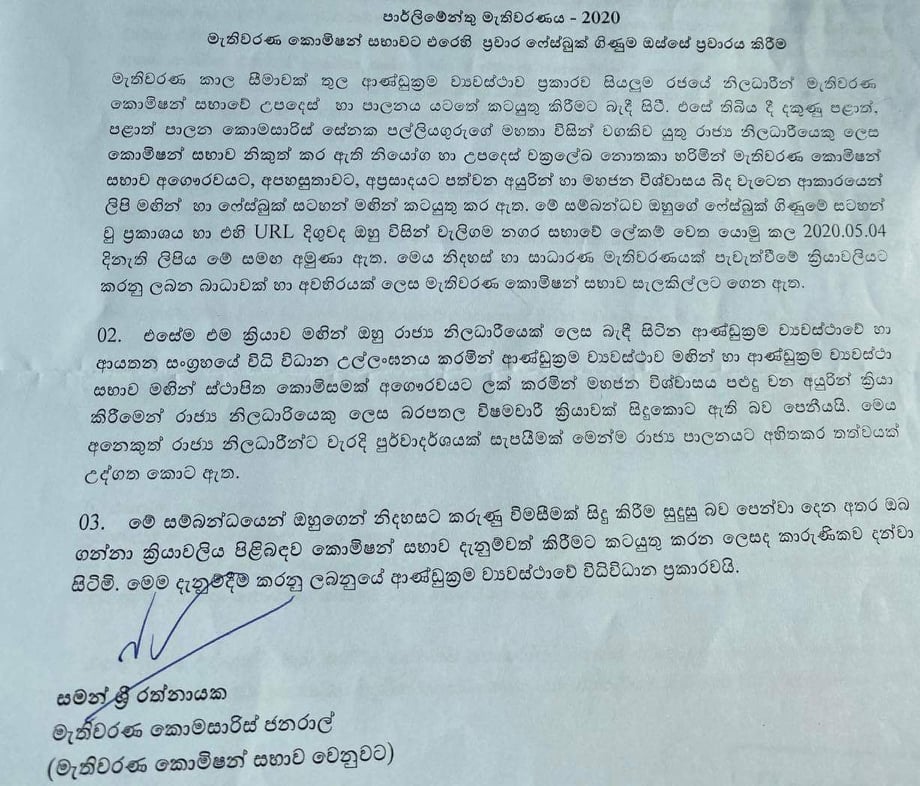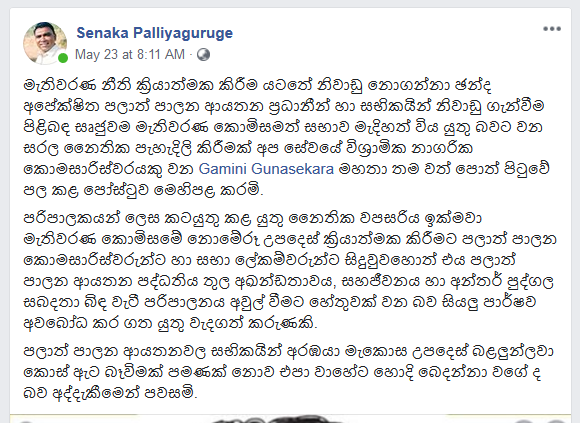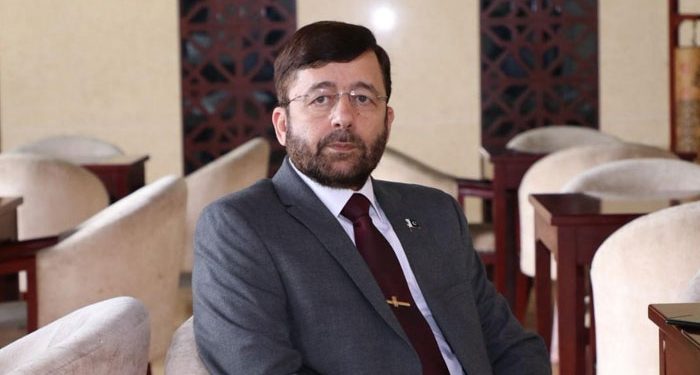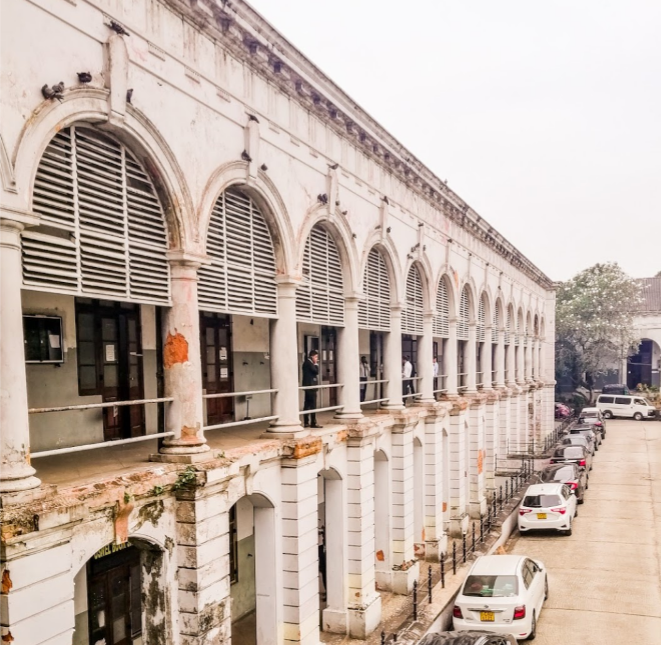KAMALIKA PIERIS
REVISED 20.6.20
Ven. Ellawala Medhananda
has drawn attention to the damage done by ‘non-Buddhists’ (Hindus and Muslims),
to the Buddhist monasteries, hermitages and ancient ruins in the north and
east. Medhananda says that more than five hundred sites with ancient Buddhist
ruins are either destroyed or are being destroyed in the north and east.
Destroying Buddhist ruins in the East started
long ago, said Medhananda. Initially, it
was done secretly and cleverly.
Now it has got speeded up and is now done openly on a large scale. At Niyankallugama, the
ruins were shot and destroyed, while Medhananda was there, exploring in 1972. Only Buddhist places face this destruction,
not the other religions, observed Medhananda. Buddhists are now
facing an ‘asarana, ahinsaka, nivata,
niyalu’ situation.
The ruins in
Jaffna and elsewhere are in danger, said Medhananda speaking in 2009 during Eelam war IV. Medhananda wanted the
Department of Archaeology to take control of the Buddhist ruins in the cleared areas of the Vanni.
Daily Mirror
Online reported in June 2010 that
Medhananda had said that more than 50 sites of archeological
importance in the Mullaitivu district have been desecrated by the LTTE and used
as bunkers and fortifications. A total of 1633 sites have been desecrated in
the Anuradhapura, Vavuniya and Mullaitivu districts and that they should be
preserved from further damage. Ellawala Medhananda there requested the
President to take steps to hand over the control of these archeological sites
to the Department of Archaeology for preservation. Monuments like moon
stones and ancient fortresses belonging to 11th century have been severely
affected.
It is clear, says this writer (Kamalika
Pieris) that there is a well planned, externally directed
campaign, to convert the north and east of Sri Lanka to a Hindu/ Muslim
territory.
Medhananda found
that ruins he had examined earlier had vanished when he went a second time.
I found that ruins I had seen in 1966 had disappeared by 1976. What I saw in
1976 had disappeared by 1986” said Medhananda.
Buddhist sites in
good condition in Trincomalee in 1960
had vanished when Medhananda visited
them in 1980. Hindu kovils had been built over many of them.
What we saw in 1964 at Veddikinarimalai had disappeared by 1973. The
ruins seen earlier at Veheragama have now vanished, said Medhananda in 2013.
Galkulama had ruins stretching all the way to
Kiliveddi. An Inscription there showed that its name was Girimahalaka Maha
vehera and it had been built by Dutugemunu. This place has been completely
destroyed, said Medhananda. Its stupa has
been destroyed and bricks scattered for miles .
The inscription
at Veheragala vihara, near Araganvila showed
that kings had worshipped there. All the
building, including the stupa have been destroyed, said Medhananda . Veheratenna which had ruins dated to 5th
century AD was heavily destroyed. Kurundammalai
had over 100 acre of
Buddhist ruins including an image house. Sunetra
wewa(Tirumangala) area had Buddhist
ruins for 5 acres or so. They have been
deliberately destroyed. At Rugam too, the ruins have been deliberately
destroyed. Stone pillars at
Pulukunava were broken into
pieces. This vandalism is not natural it has been done by persons, said
Medhananda .
Jayarampala, a
few miles north of Karanda oya had many Buddhist ruins. These have been
vandalized. The Viharakadu region close to Dighavapi has been leveled using
machinery. In 1972, they were planning to shoot and
destroy the Buddhist ruins at Niyankullukama. At Paravankandam the ruins including stupa were destroyed in
April 2002 to convert the area into a paddy field.
Then there
is the Sri Vardhana Bodhi of Kiliveddi,
Mutur. When Medhananda visited in 1952 he
found a large Bodhi tree, with stone pillars, moon stone, step slabs. He
saw them again in 1965. Thereafter Tamils living near Tirumangala
wewa moved to Kiliveddi and destroyed its
Buddhist ruins , including the moonstone.
They built a kovil near the Bodhi, continued
Medhananda . This kovil was then
extended close to the Bodhi. The branches of the Bodhi were cut, supposedly for
telephone wires. They were cut in such a way that so that the trunk was affected. When Medhananda visited in 1977, the tree and the ruins were
gone. The Bodhi was totally destroyed and a
kovil set up. There are no Buddhist
ruins there now, concluded Medhananda .
The
plan to eliminate all signs of an ancient
Buddhist civilization was greatly
helped by the fact that most of these ruins are not registered in the Department of Archaeology as
archaeological monuments. Thottama, Manthottama, Pannala oya and Ambalan oya
has archaeological remains that
which are not registered, said
Medhananda . Panama pattu forest range
is full of archaeological ruins. There
is no protection for any of it, he said.
In
the case of archaeological sites for which there are records in the Department,
another tactic was used. The files vanished, they went missing. There were 11 cave inscriptions near Kundikudichchi
aru. The Ampara Kachcheri held the file
on this. This file is now missing, said Medhananda .
Files
also vanished when new kovils are constructed. There was a hill with a stupa, and eleven cave
shrines to the east of the Pannala oya. Now
there is kovil there, said Medhananda . There had been a file at the Ampara Kachcheri
describing the Buddhist remains of the area, but with the construction of the
kovil those documents disappeared, he said.
Rock inscriptions
were specifically targeted. They were
sought out and deliberately destroyed. Mundikulammale ruins, Ampara had
rows of caves with inscriptions. These have been extensively destroyed, said Medhananda . Mahagirilla Savarankeligala had a unique inscription relating to a ‘pase
budun’. This was recorded by the Department of Archaeology. Medhananda found the stone containing the inscription smashed to pieces and
the inscription destroyed.
Kadolupotana kanda, Eravur had three inscriptions which showed that this area was
under Kavantissa. These inscriptions have been destroyed. Mundikulam
malai site in Ampara, had an inscription, discovered by Medhananda, which
stated that Vihara Maha Devi lived there after she became a nun. The rock and
the inscription had been broken up. An Inscription
at Dimbulagala cave dated to 2 century BC, was found mutilated by Medhananda in 1980. Only two words remained.
Eeratiperiyakulam vihara ruins had an inscription discovered by Parker. This inscription had
disappeared, when Medhananda looked for it. Kurundammalai known earlier as Kurathgama had an inscription
dated to Mahinda III (801-804) which said that the king had come to settle a
problem about water. C.W. Nicholas had seen
this inscription. When we
went it was not to be seen”, announced Medhananda.
Two inscriptions at Lahugala the
akuru ketu gala inscription on
Karapavata vihara, and Galhitiode inscription on Ayapavata vihara were destroyed. Thannimuruppu wewa inscription at
Kurundammalai is now destroyed. Nilaveli
had an inscription saying that the vihara was known as Kanikaravelli vihara. The
inscription has been tarred over. A
Sanskrit Mahayana inscription at Kucceveli Maha vihara was defaced in 1981,
recited Medhananda.
Stupas have been destroyed systematically. The stupa at Nilaveli was
there in 1966, it had disappeared by 1978.Medhananda saw a huge stupa, 300
by 33 feet, on the Trincomalee- Kantalai road, near 246 km post. This has been
cut in two and bricks scattered all over the teak plantation nearby. Teak has
been planted on top of the stupa, as well, reported Medhananda.
Vilankulam stupa was also huge
150 ft in circum, and 35 in height. This too had been deliberately
destroyed and bricks scattered all over. When I saw it in 1978, Sellappa
Nalliah and Inamuttusamy had built a house at the top of the stupa, with toilet
and well, said Medhananda.
The stupa
near Kinniya wells vanished after the Ceasefire agreement of 2002. The media reported in 2002 that senior monks
of Seruwila and Tamankaduwa had said that the bricks unearthed while levelling
a mound near the hotwells at Kinniya belong to Anuradhapura era and the mound
was a stupa. This has been levelled to put up a Hindu temple. The monks had
complained to the authorities.
Buddha
statues were also damaged. Medhananda found a destroyed Buddha
statue and moonstone at Oddusuddan.
Statues at Mudu Maha vihara, Panama seen in 1990 have disappeared, said
Medhananda. Kucceveli Maha vihara had
Mahayana statues ‘in pleasing form’ when Medhananda visited in 1966. When Medhananda visited in 1978 the upper parts
of most of the statues were destroyed.
The Buddha statues at Daluggala Raja Maha Vihara was damaged and
the pilima head taken as a lip galak. At Ridikanda the statues had been dragged
down from the hill and destroyed. Due to
all this, the Buddha statue found Paravankandam was removed to the Police
station for safety, and is now in Ampara museum, said Medhananda.
Medhananda observed that Hindus and Muslims had taken physical
possession of lands which were sites of Buddhist worship in earlier times. Once
they are on the land, they erase the Buddhist remains and prevent Buddhist
coming there, observed Medhananda. There was a Sinhala village at Sakkam
wewa near Pannala oya, called Bodhianga. Now
it is no longer Sinhala.
At Mottayakanda the Muslims have bulldozed all
the Buddhist ruins. Kombanacci,
originally Somawathi vihara, in Kiliveddi, Trincomalee, is now a Muslim area
and one part of the ruins is now a ‘goat farm of a Mussalman’.
Ilankaturai, near
Seruwila, earlier Lankapatuna, has been
encroached by non-Buddhists and Hindu kovils have come up. At Nelugala
buildings were set on fire by non-Sinhalese, and the Sinhala settlers driven
away. A Hindu kovil was constructed there.
Inscriptions showed that Linemalai originally
had an aramaya known as Sipavata, hosting many monks. One inscription stated
that Mahadatika Mahanaga had donated two channels named Dakapunaka and Girigamaka and its taxes to the vihara. Another
inscription indicates that a rate rala from Uva ruled this area. And that Uva
province extended to Pottuvil. A wewa Inscription
said the wewa was donated by danu
silpa chalu”. Now Linemalai is
Muslim and Tamil. LTTE chased away the few Sinhalese there.
Viharagalkanda had a large flat area
thanitalawa with huge number of Buddhist
ruins . When we visited, a Tamil man was
living there, farming
bananas. We explored the site ,
examined the ruins and copied the inscription.
When we visited Gokanna vihara, Trincomalee
(Koneswaran) in 1960, we faced much opposition from the Hindus, said
Medhananda. Medhananda was able to go to Mundikulammale
ruins, Ampara in 1964 and 1999 without any fear. But it is now dangerous for
Sinhalese to go there” he said in 2003. No Sinhalese can
go to Rugam now either.
Rugam-Piyalutana
vihara on Badulla-Batticaloa road has a vihara built by king Yatalatissa. In
1972 there was a plan to convert 18
acres to a wewa and settle non Sinhalese on there. There
are Buddhist ruins at Mahaoya,
Veheragala, and Dambaliyadde gala. In 1972 it was planned to settle non
Sinhalese there. There had
been a planned programmed to hinder Buddhists in Sembumalai, observed
Medhananda.
Bhikkhus have tried to save these Buddhist
ruins by setting up avasa on the premises. They were chased away. When monks
try to settle, they are harassed and they run away, observed Medhananda. In
my view, says this writer, (Kamalika Pieris) this is due to the fact that these
actions were not known or supported by the Nikayas. It these ventures had been
supported by a Nikaya, it would not have been easy to dislodge them.
Kohukumbure Revata had lived at Dighavapi In a
small hut, under great difficulty. He was killed by a Muslim in 1950. This got
great publicity at the time, said Medhananda. A monk had once treid to live at Budu patum
Kande. Monks had set up
an avasa at Girikurumbika vihara, but now there is nothing. A
monk had taken up abode at a Lena in Niyaguna kanda vihara Ampara and the
villagers looked after him, now he is not there said Medhananda in 2003.
Ven, Sri Sobitha tried to rebuild the stupa
Bollagama Raja Maha Vihara,Ampara
in
1911. Kekirihene Seelavansa is
keeping the temple going today, despite the fact that the vihara has no
support, the villagers are too poor, reported Medhananda . A monk has settled at Maha kachcha
kodiya vihara, Vavuniya and is
struggling to survive.
The main strategy used to suppress Buddhism in
the north and east, was to promptly substitute Hindu kovils for the destroyed
Buddhist ruins. Hindu
kovils have been built over many of the Buddhist shrines, said Medhananda.
When I visited
Sembumalai in 1978, the Buddha statue seen earlier was missing. Many ruins were
purposely damaged and a Hindu kovil has been established. The Poosari’s
statements that it was built in 1938 cannot be accepted as the materials used
for the kovil were new. There
is a kovil at Palamottai with a notice giving its ‘history’ in Tamil.
There have been
knee jerk reactions in Colombo, to this kovil building. the media reported in 2002 that
All Ceylon Buddhist women’s Congress,
National council of Buddhist women and Success, Colombo jointly appeal
to the President, PM and Minister for Buddha sasana to immediately order an
investigation into the alleged destruction of the ancient Samudragiri vihara in
Ilankathurai. Our information is that this temple has been torn down and its
stone pillars used to build a new Hindu kovil, they reported. However,
Medhananda observed in 2003 that stupa and pilimage at Samudragiri
vihara, Lankapatuna has been destroyed and the kovil set up. Samudragiri will
be completely destroyed very soon, he predicted.
Kokkadicholai
had ruins which showed that there has been an aramaya there, earlier. Guard
stones, parts of stupa could be seen. Villagers
had told Medhananda when he visited in 1968 that there had been an inscription
too. Kokkadicholai is now completely
Tamil, said Medhananda. They
have encroached over most of the 22 acres. Ruins
have been destroyed. A kovil, named
Kanakone Ishwara Kovil, has been built over the aramaya. The evidence is still
there. The Kovil started small and is now enlarged.
There is a Pullaiyar kovil too, concluded Medhananda.
Rahatgala had 30 acres of Buddhist ruins including an ancient two
storied building. It is today known as Shanthamalai,
it has two kovils. The huge stone ansana and asanaghara at Viharagalkanda
has been deposited there.
The stupa and arama of Okanda vihara were in good
condition in 1978.They have now disappeared.
There is now a Murugan kovil there, said Medhananda. Taravakulam,
Batticaloa district, had a Buddhist
vihara which is now converted to Hindu kovil. Sangamon
kanda was a Buddhist religious
site, with two cave inscriptions . Now it is a Siva kovil, Medhananda
continued.
There are three sets of ruins between Nelugala and Toppigala. Hindu statues
have been set up in them and Toppigala
also now has a Hindu kovil. Nelugala was once Ruhuna’s Piyangalu vihara. The
Buddhist evidence has been destroyed and a kovil set up, added Medhananda .
LTTE
had put up a Hindu kovil At Oddusuddan. LTTE had also built a kovil at Nilaveli by
1981. Vishnu devale was coming up in 2003 at Dharmavardanarama in Nikawewa area.
In some kovils the Buddhist link is visible.
At Tirumangala the kovil had a
Buddha statue. Kantakonishwaran
kovil near Vellavali, built on a huge, ancient
Buddhist monastery, has used the ruins as
altars. the huge stone ansana and asanaghara at vihara
gal kanda had been taken to santamalai
where a hindu kovil had been set up on the Buddhist site. At Kandakudichchi aru where
the stupa was replaced by a kovil, one mal asana gala was placed before the Hindu statue and the other was used as a step. Villagers
in Veheragoda, Ampara, said that the
stone door frame belonging to the stupa had been taken away to a kovil at
Mandur. ( Continued)
Appendix.
- Lavatories
have been built amidst valuable ruins in the North.
- At Dighavapi a bulldozer had gone ‘by
mistake’ through the temple.
- Four siripatul from Pulukunawa Maha
vihara have been taken away as miris gal.
- Kalladi puda bima, Seruwila was
discovered and protected by the armed forces during the Eelam war.
- Veheragama has 145 families of which 20 are Tamil. Veheragama has
a Raja Maha Vihara Stupa can be dated to 6-7 AD. Ruins in these areas are being deliberately
destroyed. Baddegama Chandavimala is the
viharadhipati since 1971, said Medhananda in 2013. He is managing with difficulty. He has
started a daham pasala.







